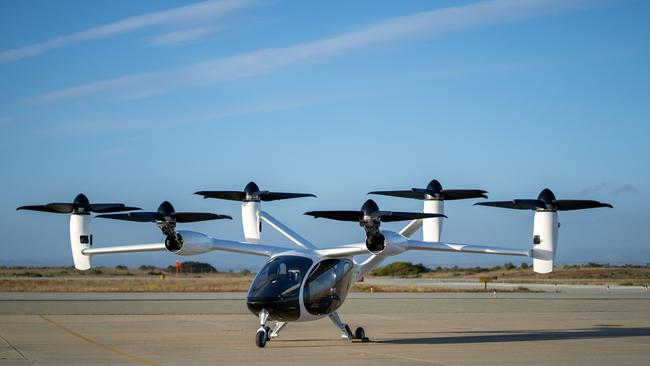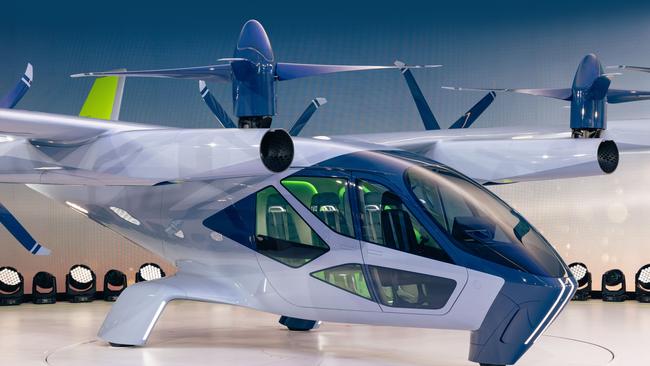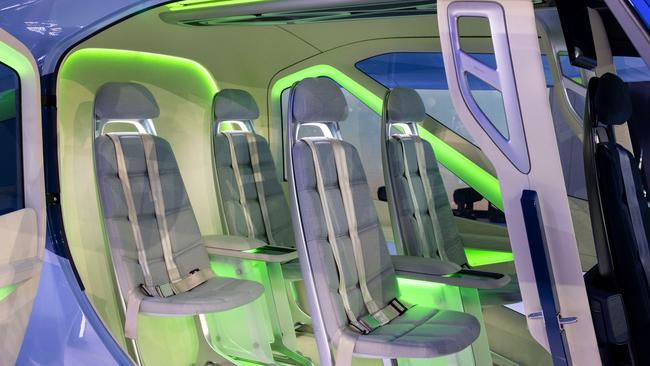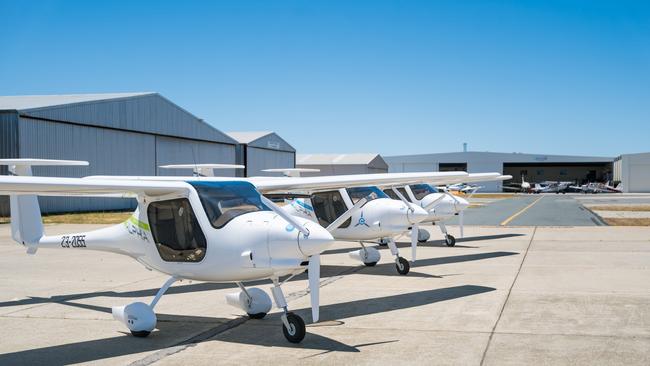Electric planes and flying cars set to revolutionise travel
Australia may be on the cusp of an aviation revolution with the arrival of electric flying vehicles and planes.
Motoring
Don't miss out on the headlines from Motoring. Followed categories will be added to My News.
Electric flying cars and flying planes are no longer the stuff you see in futuristic fantasies - they’re here in Australia and set to transform how we travel across the country.
Take Xpeng, a Chinese automaker who recently wowed crowds in Melbourne with its X2 prototype - a flying car that looks like something out of The Jetsons.
The sleek, carbon-fibre aircraft, powered by eight electric motors, can quietly zoom at 130 km/h, all while the passenger sits back, relaxes and enjoys the ride.
With a flight time of 35 minutes, it’s designed for future low-altitude city flights.
While it’s not flying here due to regulations, it is currently being flown in Dubai and tested in China.

Victorian Automobile Chamber of Commerce chief executive Geoff Gwilym said showgoers were excited by the potential of electric flight.
“The Xpeng X2 took centre stage, and for good reason,” he said.
“This advanced vertical takeoff and landing vehicle offers an interesting peek into the future of low-altitude mobility.”
But Xpeng is not the only company set to soar in Australia.

Another significant development is from Australian start-up AMSL Aero, who are currently developing Vertiia, a hydrogen-powered electric aircraft with a range of up to 800 kilometres.
This aircraft will be particularly promising for use in emergency services, including aeromedical evacuations in remote areas.
AMSL Aero’s efforts have been bolstered by a $3 million federal grant to further develop this technology.
Early this year the company received its first commercial order from AirLink and expects to be flying regional passengers by 2027.
Several other automakers like Toyota and Hyundai are also working on electrical vertical takeoff and landing (eVTOL) vehicles.

Toyota announced several years ago that they would be investing $349 million in Joby Aviation, an aerospace California-based company and leader in the development of electric air taxis.
Toyota’s contribution is not just financial, they’re also offering technological support to help Joby bring its eVTOL aircraft to the market.
These taxis are designed to carry four passengers at speeds of up to 321 km/ph.
Joby has already begun safety testing in the U.S. and is working with Australian authorities to bring this technology to Australian skies.

Hyundai is making significant strides in the eVTOL space with its Urban Air Mobility (UAM) division.
Their eVTOL is being designed under their new brand Supernal.
The vehicle is fully electric, with a range and speed suitable for intracity travel.
But Hyundai’s vision goes beyond you’re eVTOL, they’re ambition is to build an entire ecosystem needed for UAM, including vertiports, air traffic management, and passenger services.

Aside from automakers entering the aviation space, Australian green transport pioneer and leading electric aircraft supplier, Fly OnE, has already been operating electric flights on the Pipistrel Electro out of Western Australia and in the Yarra Valley of Victoria.
The company so far has had over 1600 passenger movements and flown around 165,000 km.
Now the company has plans to offer air taxis potentially taking to the skies as early as 2024.
The service will offer eco-friendly transportation options connecting key destinations such as Moorabbin, Lilydale, Mount Hotham, Avalon, Torquay, Sale and more.
The company has also just completed an MoU to establish a large-scale international electric pilot training facility at Latrobe Regional Airport as part of the Latrobe Aerospace Technology Precinct.

FlyOnE Sustainable Aviation chief executive, Korum Ellis, expressed enthusiasm about the new venture.
“We are excited to lead the charge in sustainable aviation with the launch of our international electric pilot training facility and the expansion of our air taxi services.
We look forward to shaping the next generation of pilots and providing eco-friendly travel options for our community,” he said.
While the technology for electric flying vehicles is advancing rapidly, there are still significant regulatory hurdles to overcome.
The Civil Aviation Safety Authority (CASA) in Australia is currently working to develop the necessary regulations to ensure the safe integration of eVTOLs into Australian airspace.
This includes creating specific corridors for flying cars and establishing safety standards that these vehicles must meet before they can operate commercially.
As these technologies continue to develop, the next few years will likely see electric planes and flying cars becoming a common sight in Australian skies.
Originally published as Electric planes and flying cars set to revolutionise travel


